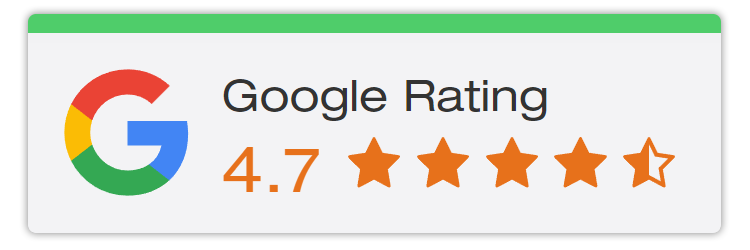Have you noticed a shift in your website’s performance lately and are wondering if it’s due to a Google algorithm update? Let’s break it down so you can understand what’s happening and why it matters to your online presence.
What is a Google Algorithm Update?
Think of Google’s algorithm as the set of rules and formulas that Google uses to determine which websites show up in search results and in what order. An algorithm update is when Google tweaks these rules to improve the user’s search experience, often aiming to prioritise high-quality, relevant content.
Google updates its algorithm thousands of times a year, with most changes being so minor that they go unnoticed. However, a few times each year, Google rolls out major updates that can significantly impact website rankings. These major updates are what usually get business owners and SEO experts buzzing, as they can cause noticeable shifts in website traffic and visibility.
So, how can you tell if your website has been affected by a Google algorithm update? Here are a few signs:
1. Sudden Drop in Organic Traffic
When Google tweaks its algorithm, it can change how your website shows up in search results. If your site suddenly drops in ranking for key search terms, it can lead to fewer clicks, less traffic, and, ultimately, fewer customers finding their way to your online doorstep.
But why does this happen? Google’s algorithm updates aim to improve the search experience, often prioritising websites that offer valuable, relevant, and high-quality content. If your site takes a hit, it might be a sign that Google thinks there’s room for improvement in how your content aligns with these goals.
2. Decrease in Keyword Rankings
First things first: what’s a keyword ranking? It’s the position your website holds in the search results when someone types in a specific word or phrase. High rankings are golden because they make your site more visible to potential customers.
So, when you see your rankings drop, it’s like moving from the front row to the back in a crowded concert – not where you want to be! This dip can be one of the first clues that a recent Google algorithm update isn’t in favour of your current website content or structure.
Why does this happen? Google’s always tweaking its algorithm to make sure users get the most relevant and top-notch content. If your site takes a hit, it might mean Google thinks there are more relevant or higher-quality pages that should rank above yours.
3. Changes in SERP Features
Search Engine Results Page (SERP) features like featured snippets, local packs, and knowledge panels offer a fantastic way to boost your website’s visibility and click-through rates. Losing these can mean a significant dip in user engagement and traffic.
Why do these changes happen? Google’s algorithm updates often tweak what the search engine values in content and website structure. If an update rolls out and your site loses a featured snippet or drops out of the local pack, it could be because Google now favours different criteria for awarding these features.
4. Increased Bounce Rate
A bounce rate hike can mean several things, but when it’s tied to an algorithm update, it often suggests that your site might not be meeting user expectations or aligning well with search intent. Google’s main game is to deliver the most relevant, high-quality content to its users. If an update shifts what’s considered relevant or high-quality, and your site doesn’t match up, users might bounce back to search results to find something that better fits their needs.
5. Decline in Conversion Rates
When Google tweaks its algorithm, it can impact not just your traffic but the quality of that traffic too. If the update changes how your site ranks or which queries it appears for, you might start attracting visitors who aren’t as likely to convert. Maybe they’re looking for something slightly different, or perhaps your site isn’t appearing as authoritative or trustworthy post-update.
6. Variations in Page Indexing
Page indexing is crucial because it’s how Google collects and stores your pages in its massive database to show up in search results. When there’s a shift in how your pages are indexed, it can directly impact your site’s traffic and visibility. An algorithm update can alter what Google deems index-worthy, affecting how your pages are catalogued.
7. Warnings or Penalties in Google Search Console
Google Search Console is like a health check-up for your website, showing how Google views and interacts with your site. When there’s an algorithm update, the criteria for what’s considered good practice can shift, and actions that were once okay might now trigger warnings or penalties.
8. Fluctuations in Competitor Rankings
When Google tweaks its algorithm, it’s not just your site that feels the impact; the entire search landscape can shift. If you see competitors suddenly rising or dropping in the search results, it’s a strong indicator that the rules of the game have changed.
9. Unusual Increase in Crawl Errors
Have you spotted a surge in crawl errors in your Google Search Console lately? This might be more than a mere technical hiccup—it could signal that your website is feeling the effects of a recent Google algorithm update. Let’s unpack what this means and how you can tackle it.
Crawl errors occur when Google’s bots have trouble accessing pages on your website. While occasional errors are normal, a sudden increase could indicate that something bigger is at play, possibly linked to changes in how Google’s algorithm assesses and indexes websites.
What to Do If You’ve Been Hit by Algorithm Update
Now that you know the signs, we can start troubleshooting your website so you can go regain your online presence. The table below pinpoints action items that you can do for each sign we discussed in this blog post.
Sign |
Action Points |
|
Sudden Drop in Organic Traffic |
Analyse traffic sources, review SEO practices, update content, and monitor for improvements. |
|
Decrease in Keyword Rankings |
Check keyword performance, compare with competitors, optimise content, and improve on-page SEO. |
|
Changes in SERP Features |
Identify lost features, understand new ranking criteria, optimise content, and monitor changes. |
|
Increased Bounce Rate |
Improve website usability, enhance content relevance, optimise for user intent, and conduct A/B testing. |
|
Decline in Conversion Rates |
Analyse user journey, optimise conversion paths, test different strategies, and monitor user behaviour. |
|
Variations in Page Indexing |
Review indexed pages, ensure proper site structure, fix crawl errors, and submit updated sitemaps. |
|
Warnings or Penalties in Google Search Console |
Investigate issues, make necessary changes, submit a reconsideration request, and monitor Search Console alerts. |
|
Fluctuations in Competitor Rankings |
Monitor competitors, analyse their changes, adapt your strategy, and enhance your website’s SEO. |
|
Unusual Increase in Crawl Errors |
Investigate and resolve errors, improve site accessibility, update sitemaps, and continuously monitor for new errors. |
We Can Help You Fix Your Website SEO
Struggling with your website’s performance after the latest Google update? WebBuzz is here to help.
We specialise in diagnosing and fixing SEO issues caused by algorithm changes. If you’ve noticed a drop in traffic, rankings, or any other issues, our team can provide the expertise you need to get back on track.
Call us on 1300 4100 81 or CLICK HERE for a FREE website assessment.

















